As the leading international gateway to Peru, Lima is a must-stop for those planning a visit to Machu Picchu. However, this vibrant metropolis offers much more than just a transit point.
Dedicate a day or two to discovering the fascinating blend of the old and the new that defines Lima. Meet Peruvians from various regions and backgrounds and indulge in a unique cuisine featuring iconic dishes like ceviche, lomo saltado, and causa rellena.
In Lima, you can enjoy the cosmopolitan atmosphere of the capital or explore an itinerary full of experiences. Visit historic plazas and churches, admire adobe ruins over 1,000 years old, and savor world-class restaurants and a vibrant nightlife. Take advantage of parks with ocean views and renowned museums and galleries.
This capital is a melting pot of cultures, with a rich history of immigration from Asia, Europe, Africa, and recent arrivals from the Andes, the Amazon, and coastal regions. Lima is a unique and diverse destination that deserves thorough exploration before heading to Machu Picchu.
- History
- Districts of Lima
- What to Do in Lima?
- Museums of Lima: A Journey Through Peruvian History and Culture
- Parks and Plazas of Lima: The Social Heart of the City
- Lima Gastronomy: A Feast for the Senses
- Magic Water Circuit: A Spectacle of Lights and Water
- San Francisco Convent and Catacombs: History and Mystery
- Port of Callao: History and Adventure on the Peruvian Coast
- Lima’s Malecón: Scenic Walk Along the Coast
- Larcomar: Shopping with Pacific Views
- Artisan Markets: The Soul of Peruvian Handicrafts
- Archaeological Sites in Lima: A Link to the Past
- Hotels in Lima
- Restaurants
- Things You Should Know Before Visiting Lima
- Gray Skies
- Let’s Eat!
- Traffic
- Don’t Eat Ceviche at Night
- Unconventional Beaches
- Expensive Taxis from the Airport
- Choose the Ideal Neighborhood for Your Stay in Lima
- Learn Some Basic Spanish Words and Phrases to Make Your Trip Easier
- Follow Big City Safety Precautions to Avoid Theft in Lima
- Safety Tips for Women Traveling Alone in Lima
- Lima Cultural Calendar
- Frequently Asked Questions
- You might be interested in:
History
Lima Before the Incas
Before Inca rule, various indigenous cultures inhabited the Lima region, leaving significant archaeological traces. Ancient cultures in Lima, like the Caral-Supe civilization (3000 BC – 1800 BC) located north of Lima, are famous for their pyramids and residential structures. The Lima culture (100 AD – 650 AD) left its legacy at Huaca Pucllana, an impressive adobe pyramid in Miraflores. Later, the Wari Empire (600 AD onwards) was known for its stone construction and textile production skills.
Lima During the Inca Empire
In the 15th century, the Incas began their expansion from Cusco, incorporating the Lima region. The Pachacamac archaeological site, 40 km from Lima, was an important pilgrimage center that the Incas integrated into their religion, building temples like the Temple of the Sun. The region was connected through the Qhapaq Ñan, the Inca road network, facilitating trade and communication. Lima was part of Chinchaysuyu, one of the four provinces of the Tahuantinsuyo, and its inhabitants participated in the mita system, providing labor for imperial projects.
Lima During the Conquest of Peru
Lima and the Spanish Conquest are closely linked. On January 18, 1535, the conquistador Francisco Pizarro founded Lima, the center of colonial power in South America. Key events include the capture of Atahualpa in 1532 and the founding of Lima as the “City of Kings.” The city was besieged in 1536 during Manco Inca’s rebellion, but the Inca resistance was eventually defeated.
Lima in the Colonial Era
During the Viceroyalty period, Lima was the capital of the Viceroyalty of Peru, becoming the colony’s main administrative, political, and economic center. The city experienced remarkable architectural development, with the construction of the Lima Cathedral, the Monastery of San Francisco, and the Torre Tagle Palace. Lima became a cultural hub, with the University of San Marcos (founded in 1551) being one of the oldest academic centers in the Americas.
Lima in the Republican Era
In 1821, Lima witnessed the declaration of Peru’s independence and became the new republic’s capital. The city played a crucial role during the War of the Pacific (1879-1884), occupied by Chilean forces between 1881 and 1883. Despite conflicts, Lima continued to develop economically, driven by exporting natural resources like guano.
Lima in the 20th and 21st Centuries
In the 20th century, Lima faced economic crises and internal conflict with the Shining Path. However, since the 2000s, the city has experienced significant economic growth. Lima hosted the 2019 Pan American Games, reaffirming its importance in the region.
During the COVID-19 pandemic, Lima was one of the hardest-hit cities in Peru, with strict control measures implemented to curb the virus’s spread.
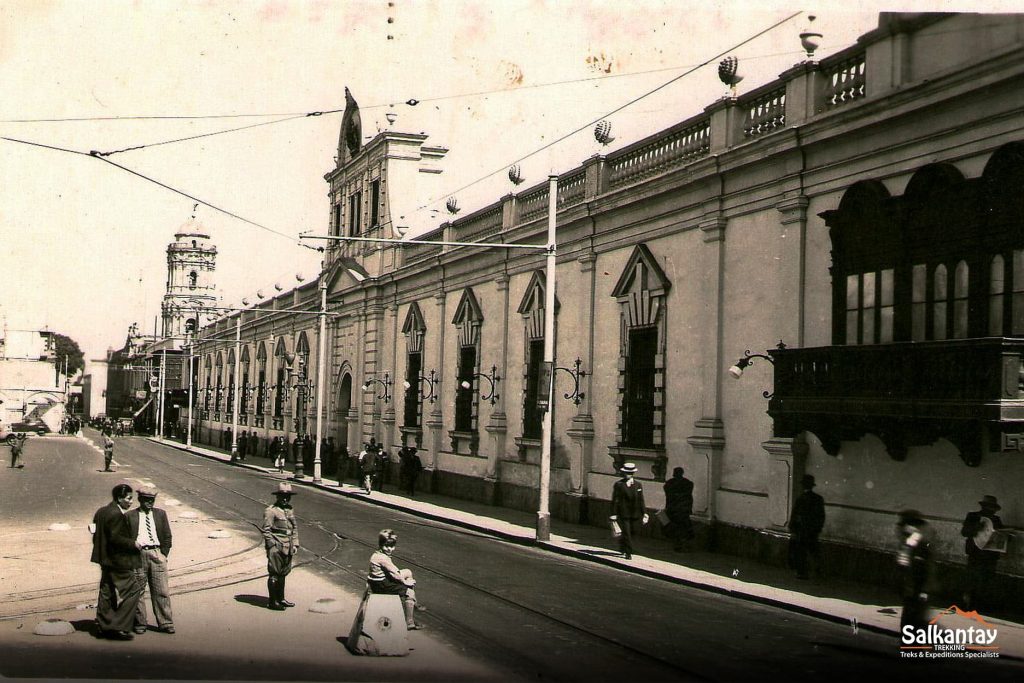
Districts of Lima
Lima, the capital of Peru, is a diverse city divided into several districts, each with unique characteristics. Each part of the city offers something different, from historic districts to the most modern and exclusive areas. Here’s a look at some of Lima’s most emblematic districts:
Central Lima (Cercado de Lima)
The Historic Center of Lima is the heart of the city, home to significant landmarks such as the Plaza Mayor, Lima Cathedral, and the Government Palace. This district is recognized as a UNESCO World Heritage Site and must-see for those interested in Lima’s colonial history.
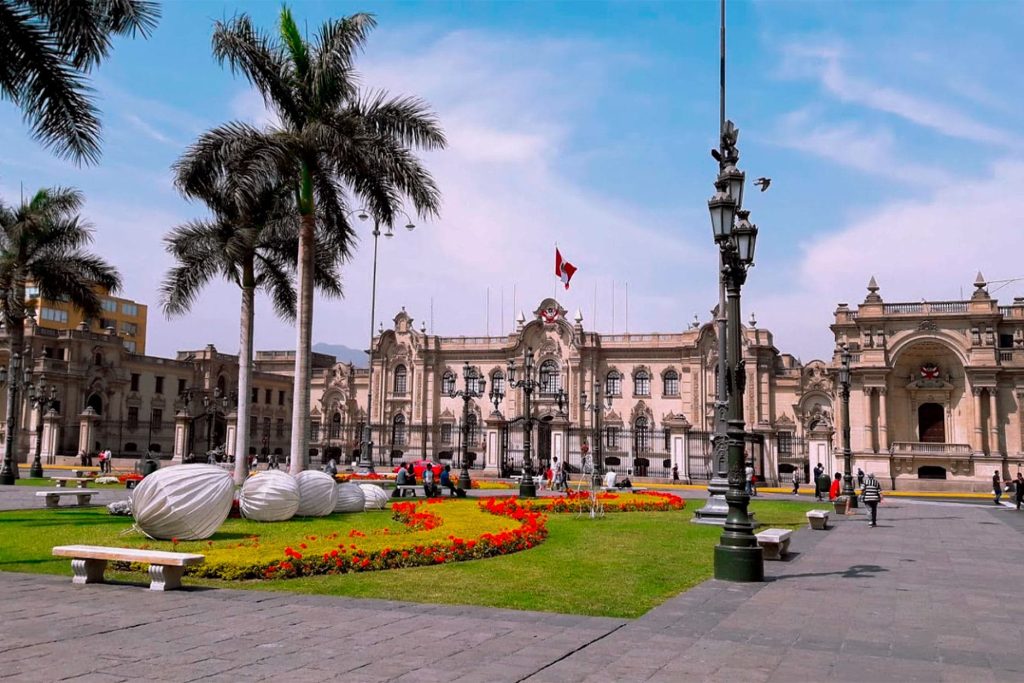
Miraflores
One of Lima’s most tourist-friendly districts, Miraflores is known for its beautiful parks, oceanfront cliffs, and vibrant nightlife. Attractions here include Kennedy Park, Larcomar Shopping Center, and Huaca Pucllana, a pre-Inca pyramid. This district is popular among visitors for its luxury hotels, gourmet restaurants, and proximity to the coast.
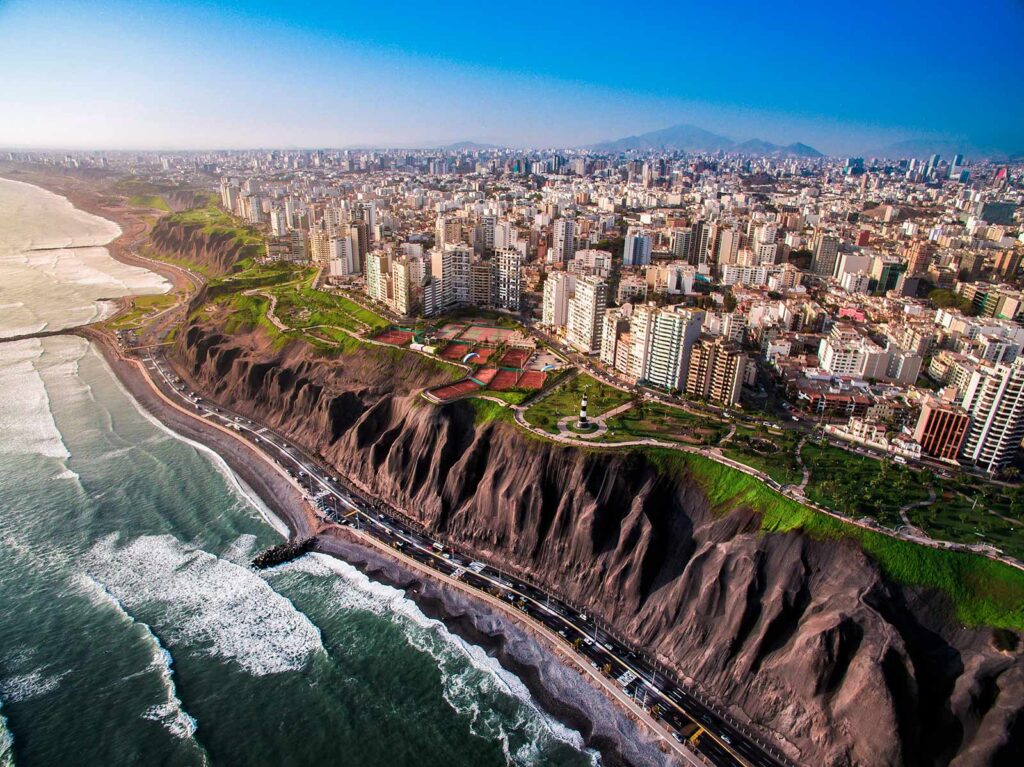
San Isidro
San Isidro is considered Lima’s financial district, home to corporate offices, embassies, and some of the city’s most exclusive residences. Despite its commercial focus, it also has green areas like the El Olivar Forest, a historic park with olive trees dating back to the 17th century. San Isidro combines elegance and modernity, making it a key point for business and diplomacy.
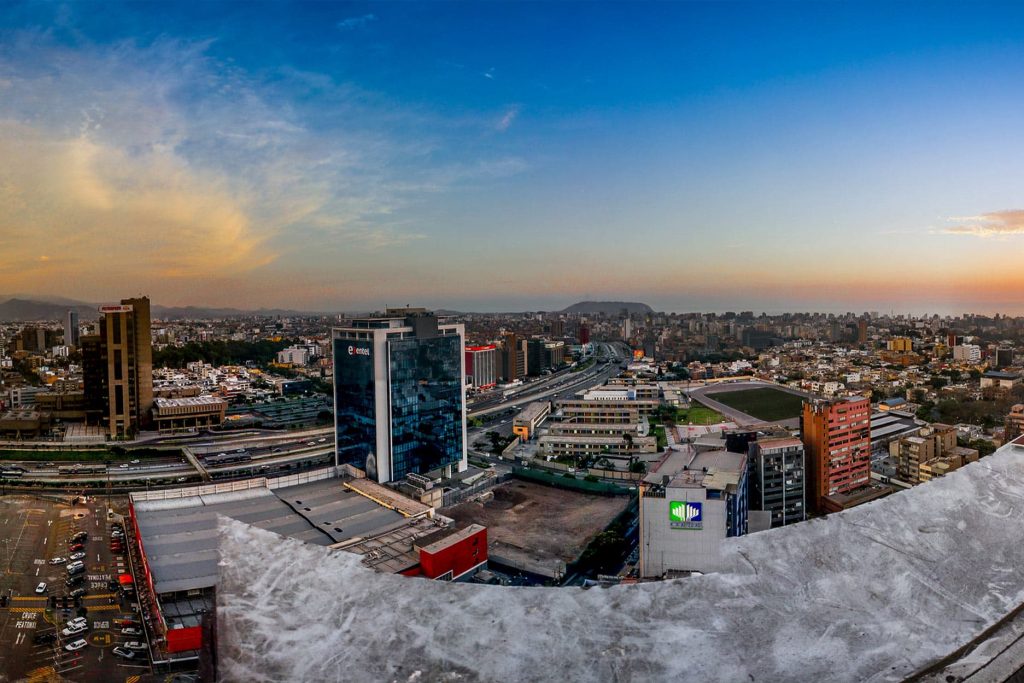
Barranco
Known as Lima’s bohemian district, Barranco is famous for its artistic and cultural vibe. This district hosts numerous art galleries, charming cafes, bars, and stunning ocean views. The Bridge of Sighs and the Pedro de Osma Museum are among the most visited attractions. Barranco is ideal for those who enjoy the nightlife and explore Lima’s art scene.
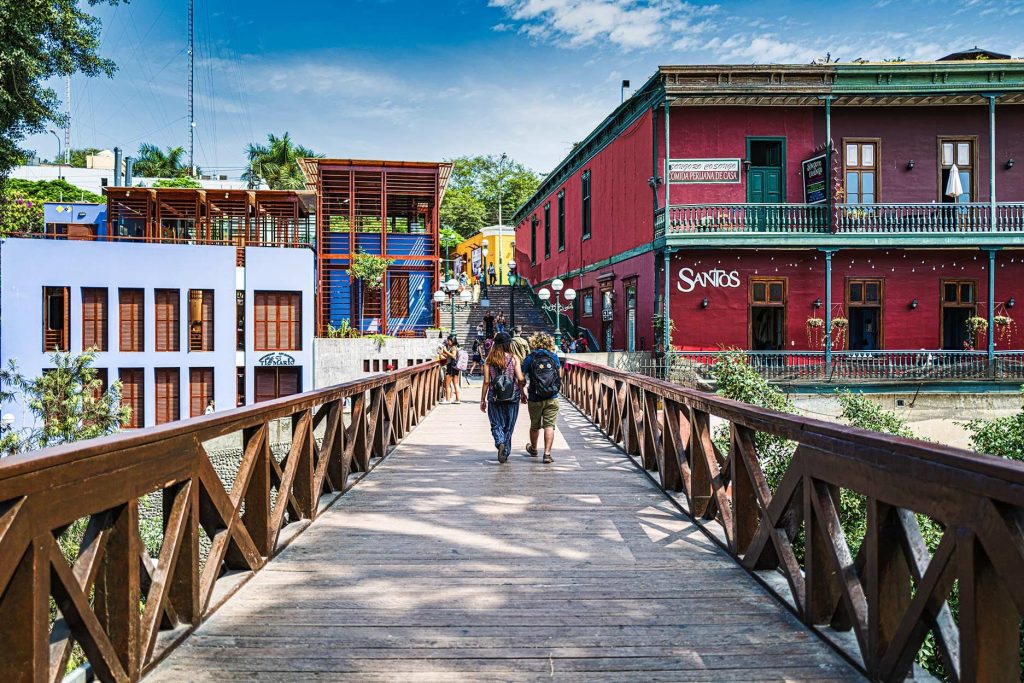
San Borja
San Borja is a residential district known for its culture and sports focus. Here, you’ll find the Grand National Theater and the Museum of the Nation, two of Lima’s leading cultural centers. Additionally, San Borja has extensive green spaces and bike paths, promoting an active and healthy lifestyle.
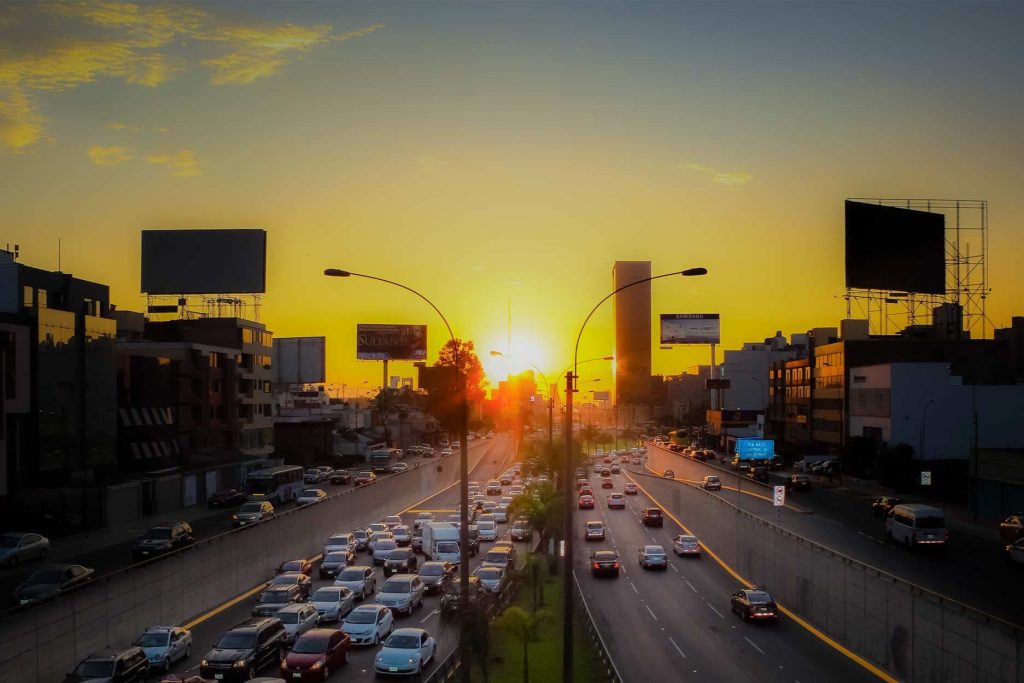
La Molina
This is one of Lima’s most exclusive districts, known for its luxury residential areas and prestigious educational institutions. La Molina is also home to several private clubs and recreational areas. It’s a peaceful district, ideal for those seeking a safe and family-friendly environment.
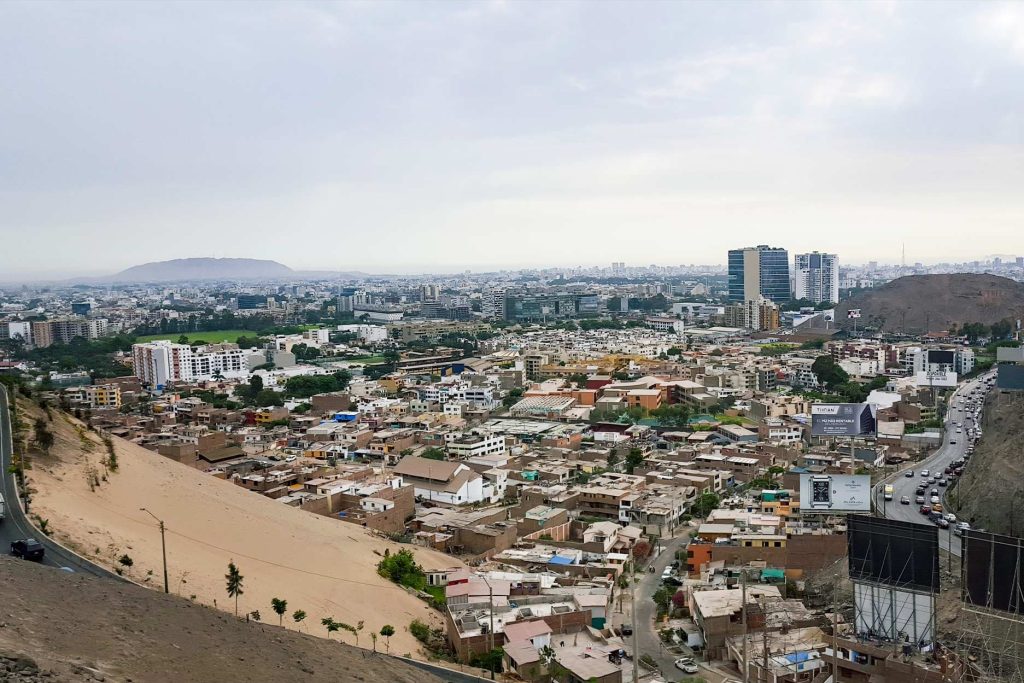
Callao
Although technically not a district of Lima, Callao is Peru’s principal seaport and is closely tied to Lima’s history and economy. Callao is famous for its historic fortress, the Real Felipe, and as the starting point for tours to the Palomino Islands, where you can see sea lions and seabirds.
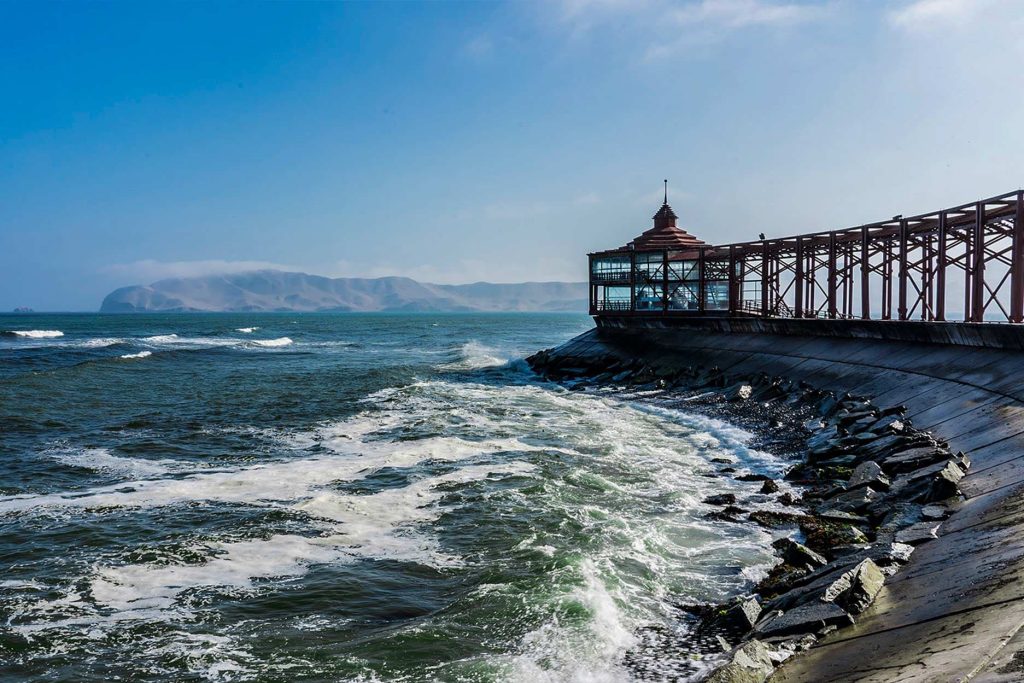
Surco (Santiago de Surco)
Surco is a district that blends residential areas with commercial and cultural zones. It’s known for Friendship Park, a recreational space with an Andalusian-style arch and an artificial lake. Surco attracts families and young professionals due to its diverse residential and entertainment options.
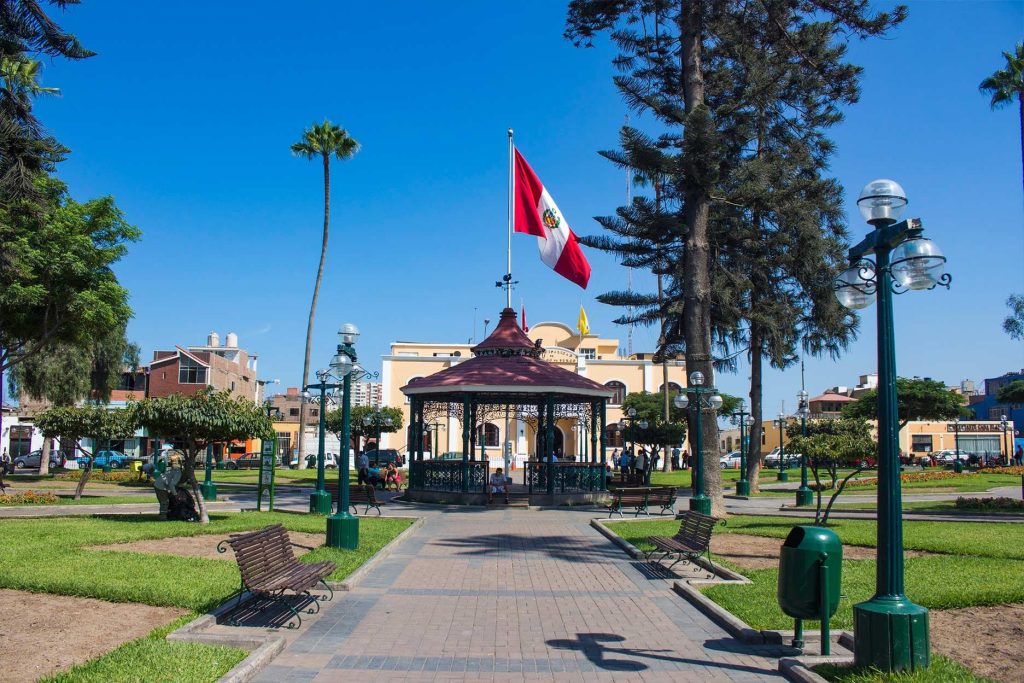
What to Do in Lima?
Lima has a rich history dating back to the Inca Empire, which is full of ancient sites worth visiting. The Plaza de Armas of Lima is the historic heart of the city, surrounded by impressive colonial buildings like the Lima Cathedral. Other critical historical landmarks include Huaca Pucllana, an ancient adobe pyramid in Miraflores; the San Francisco Monastery, famous for its catacombs; and the Larco Museum, which houses an extensive collection of pre-Columbian art.
Lima is also a must-visit destination for lovers of Peruvian cuisine. The city boasts a wide variety of traditional restaurants where you can enjoy typical dishes like ceviche, lomo saltado, and papa a la huancaína. Additionally, Lima is known for its innovative fusion cuisine, which combines Peruvian ingredients with international culinary techniques, creating unique gastronomic experiences in world-renowned restaurants.
Besides its historical sites and delicious food, Lima is famous for its beautiful beaches. The Costa Verde is an extensive coastline that offers cliffside beaches, rocky shores, and lush vegetation, ideal for those seeking relaxation by the sea. The Miraflores district is one of the most popular for beachgoers, with a wide range of hotels, restaurants, and shops. Here, visitors can also engage in various activities such as surfing, paddle surfing, and kayaking, enjoying the waves of the Pacific Ocean.
Museums of Lima: A Journey Through Peruvian History and Culture
You can explore Lima’s museums, which offer a unique window into Peru’s rich history and culture. Among the most notable are the Larco Museum, famous for its collection of pre-Columbian art and erotic pottery; the Lima Art Museum (MALI), which houses a vast collection of Peruvian art from the pre-Hispanic Era to the contemporary; and the National Museum of Archaeology, Anthropology, and History of Peru, where you can discover the evolution of Peruvian civilizations through millennia-old artifacts. These museums are scattered throughout Lima’s districts, allowing you to enjoy a cultural tour while exploring the city’s diversity.
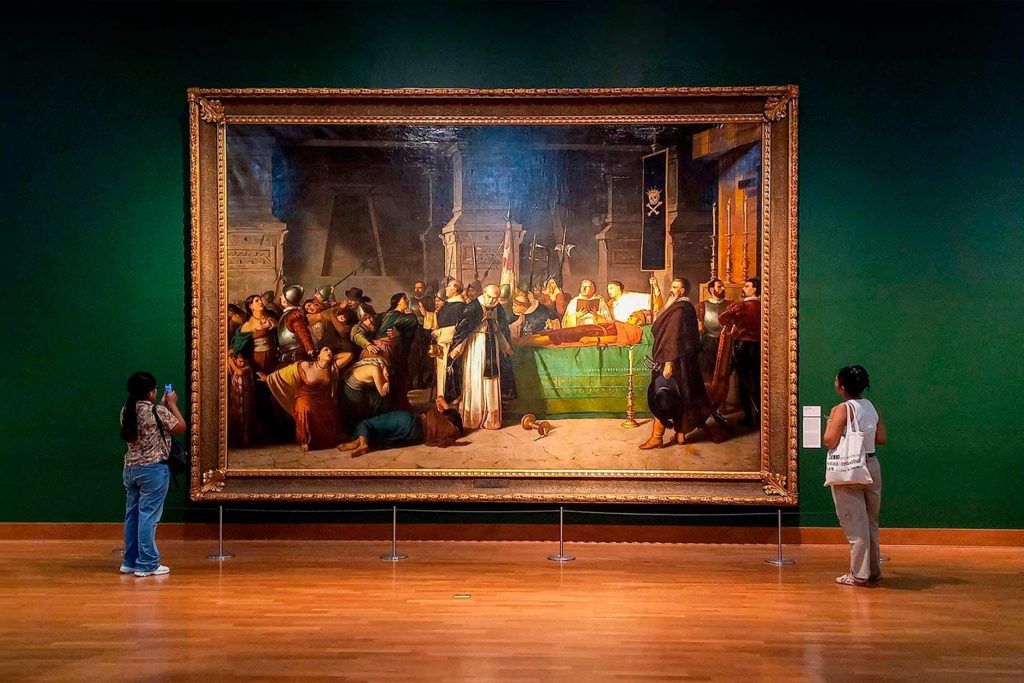
Parks and Plazas of Lima: The Social Heart of the City
In Lima, as in many cities in South America, parks and plazas are the heart of social life. Here, people gather to relax, chat, read, enjoy a snack, or spend time with family and friends. Each district of Lima has its central park or plaza that reflects the area’s character. A must-visit is Kennedy Park in the heart of Miraflores, known for its freely roaming cats and vibrant atmosphere. Another essential spot is the Plaza de Armas of Lima in the Historic Center, surrounded by iconic buildings like the Cathedral of Lima and the Government Palace. These plazas and parks offer a green respite in the city and provide a window into everyday life in Lima.
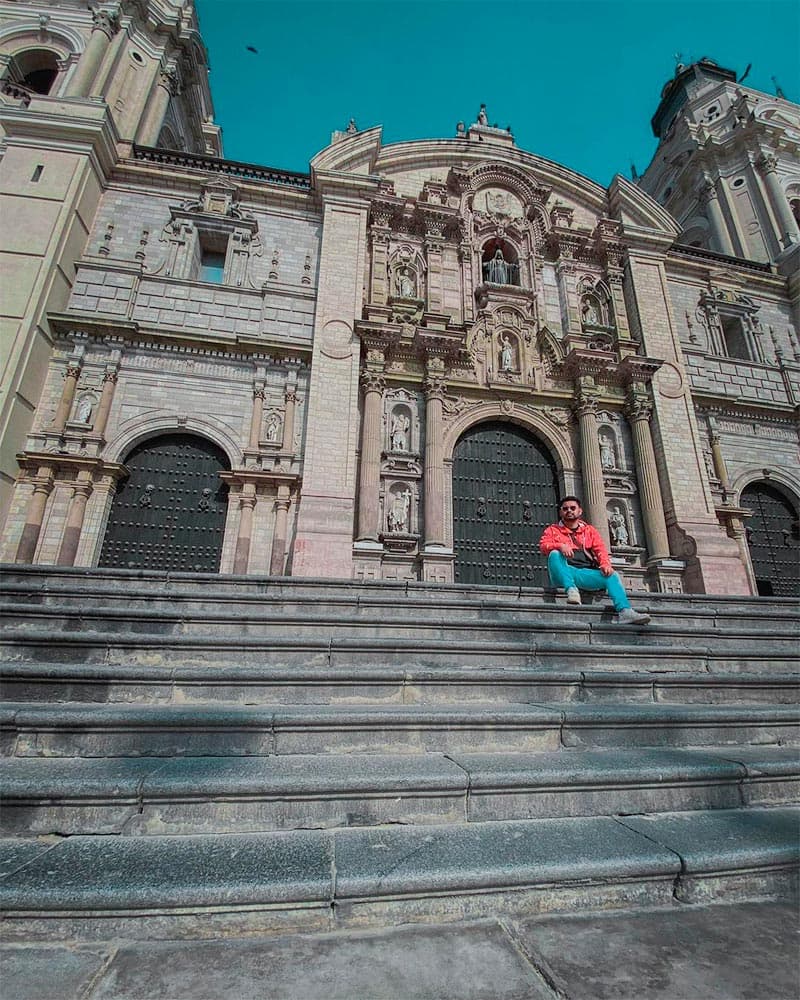
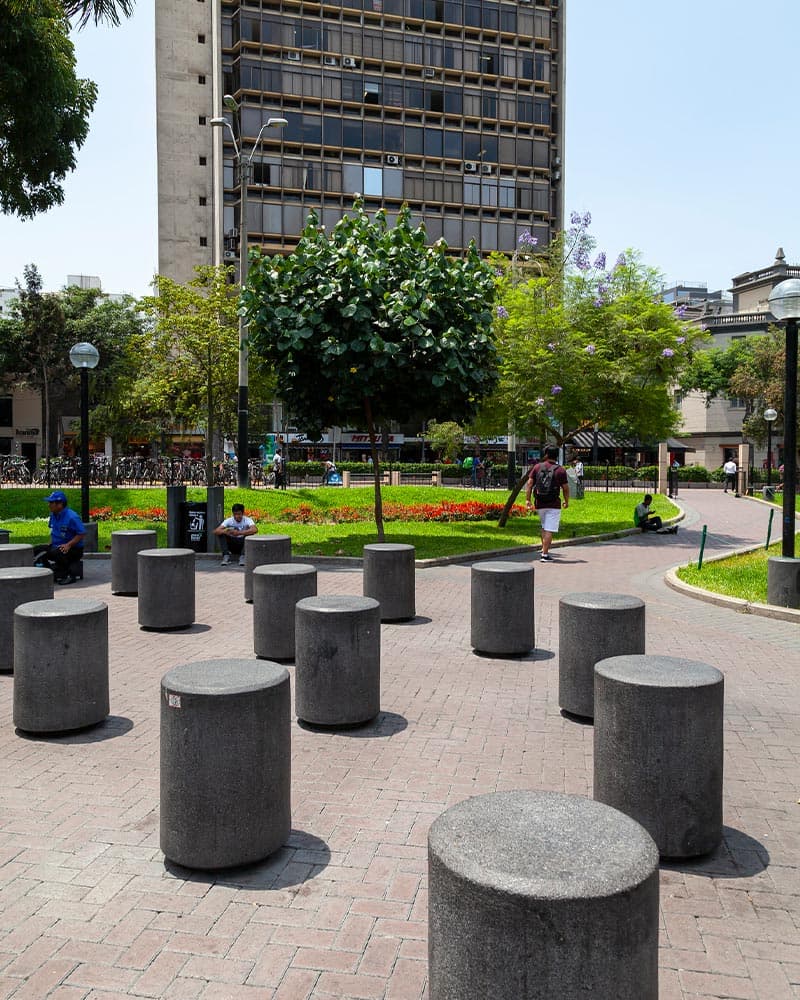
Lima Gastronomy: A Feast for the Senses
Lima will surprise you with its exceptional culinary scene if you’re a food lover. Peru is amid a gastronomic boom, and the capital is the epicenter of this movement, filled with an endless variety of delicious dishes. Some typical dishes you shouldn’t miss include ceviche, lomo saltado, and causa limeña. Pair your meal with a pisco sour, the national drink, and finish with a dessert like picarones (a Peruvian donut) or suspiro a la limeña (a creamy caramel dessert with port meringue). Exploring Peruvian cuisine in Lima is an experience that will delight any palate.
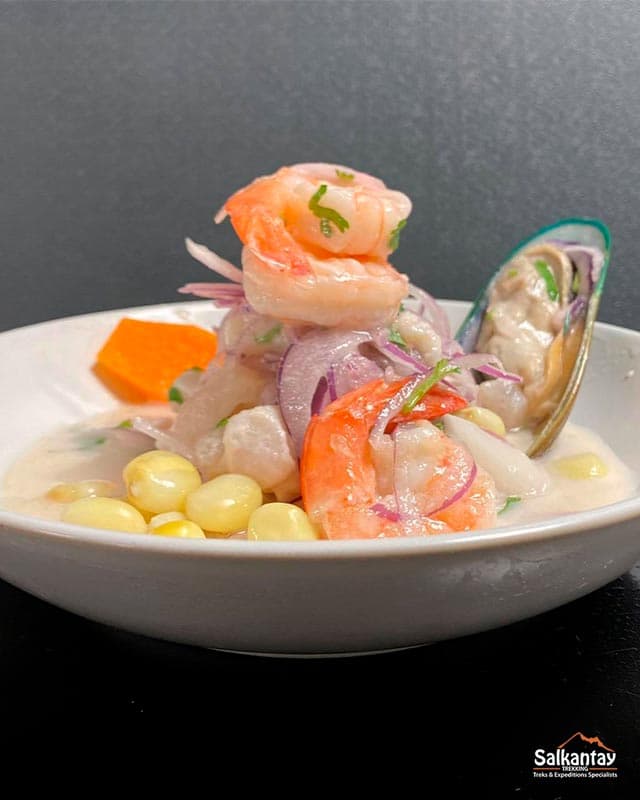
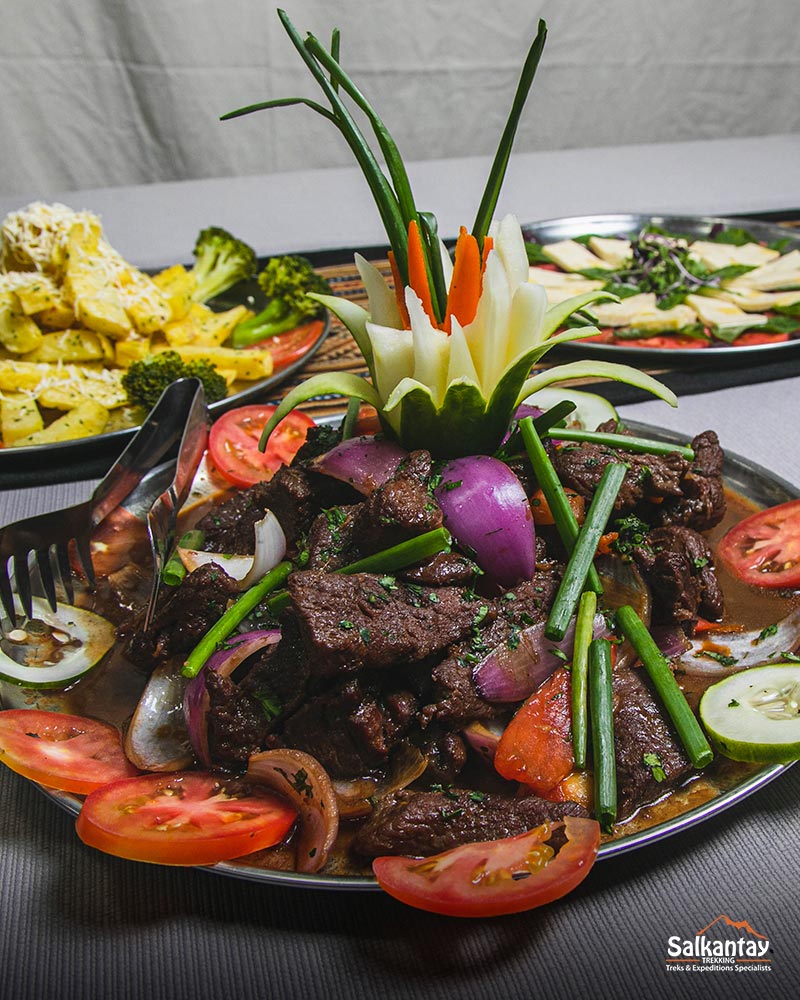
Magic Water Circuit: A Spectacle of Lights and Water
The Magic Water Circuit, located in the Park of the Reserve in central Lima, is an attraction you cannot miss. This show, recognized as one of the largest fountain complexes in the world, features 13 cybernetic fountains that shine and “dance” to the rhythm of music ranging from traditional Peruvian to contemporary. It’s an ideal nighttime activity for families and couples, offering an unforgettable visual experience in the city’s heart.
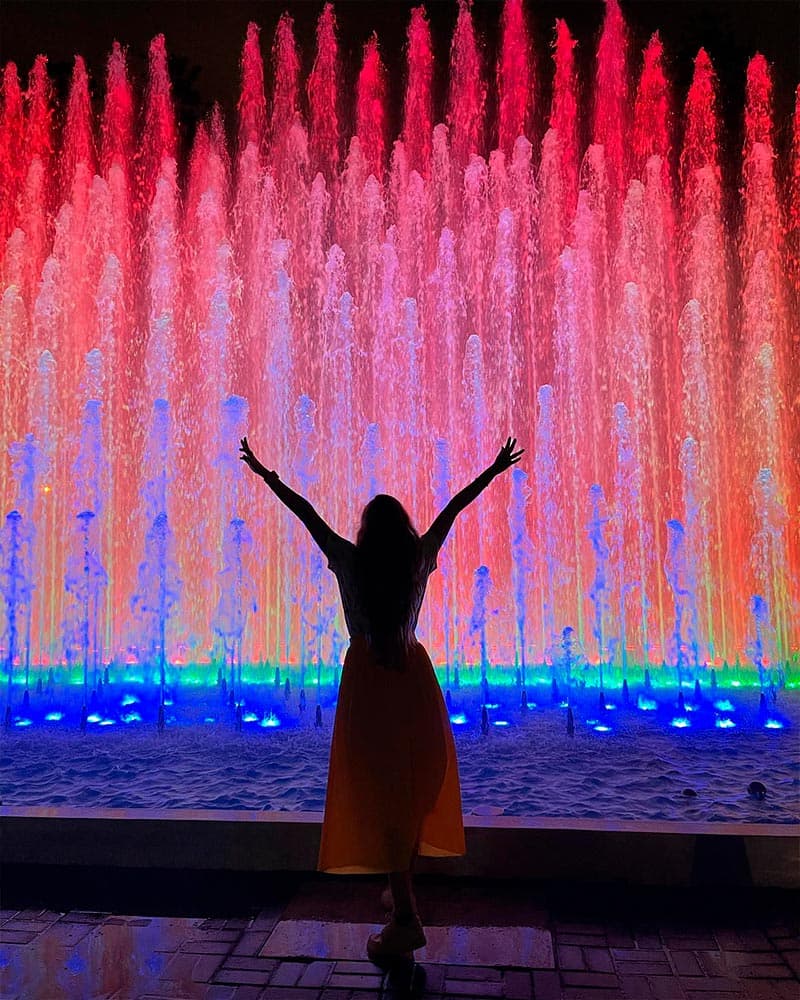
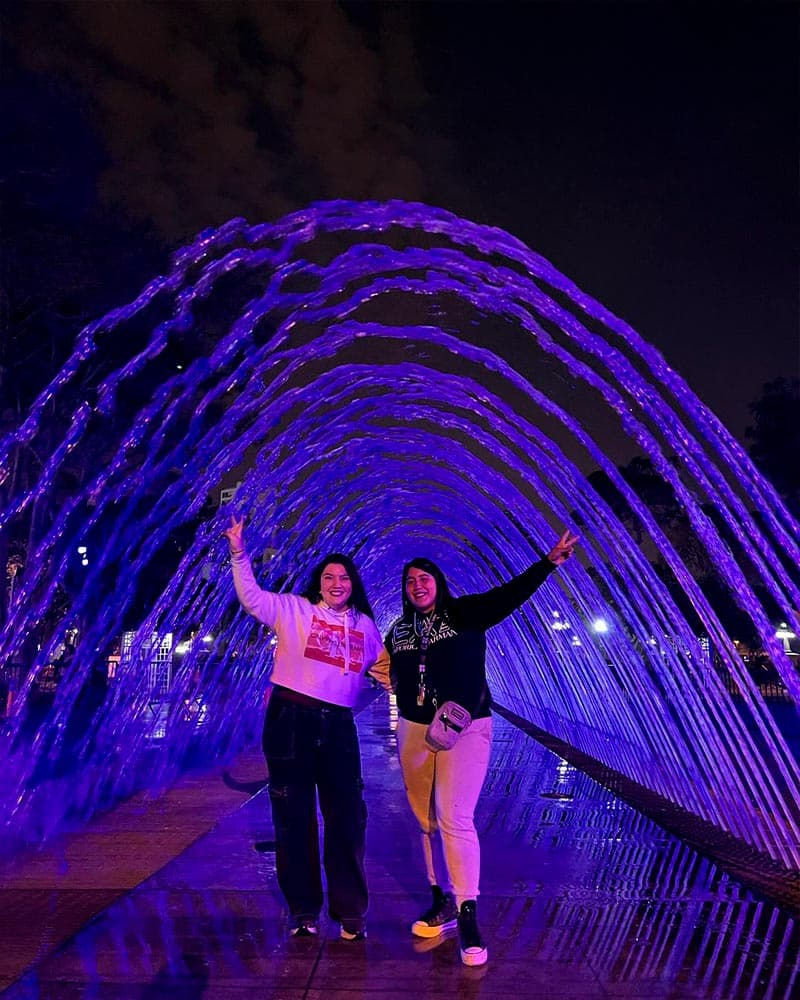
San Francisco Convent and Catacombs: History and Mystery
Just one block from Lima’s Plaza de Armas is the San Francisco Convent, an impressive baroque-style building constructed in the late 17th century. This convent is famous for its library, which houses around 25,000 ancient texts. However, the main attraction is its network of catacombs, where the remains of some 25,000 people rest. Visiting this place is a journey into Lima’s colonial history and exploring the city’s mysterious and fascinating corners.
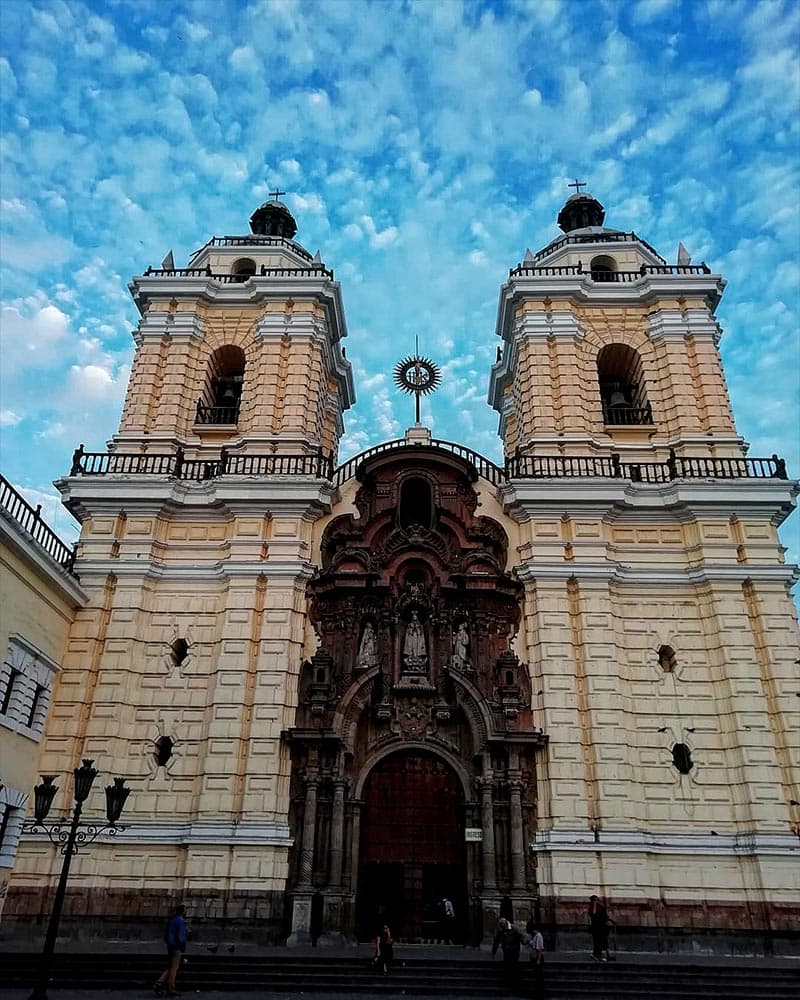
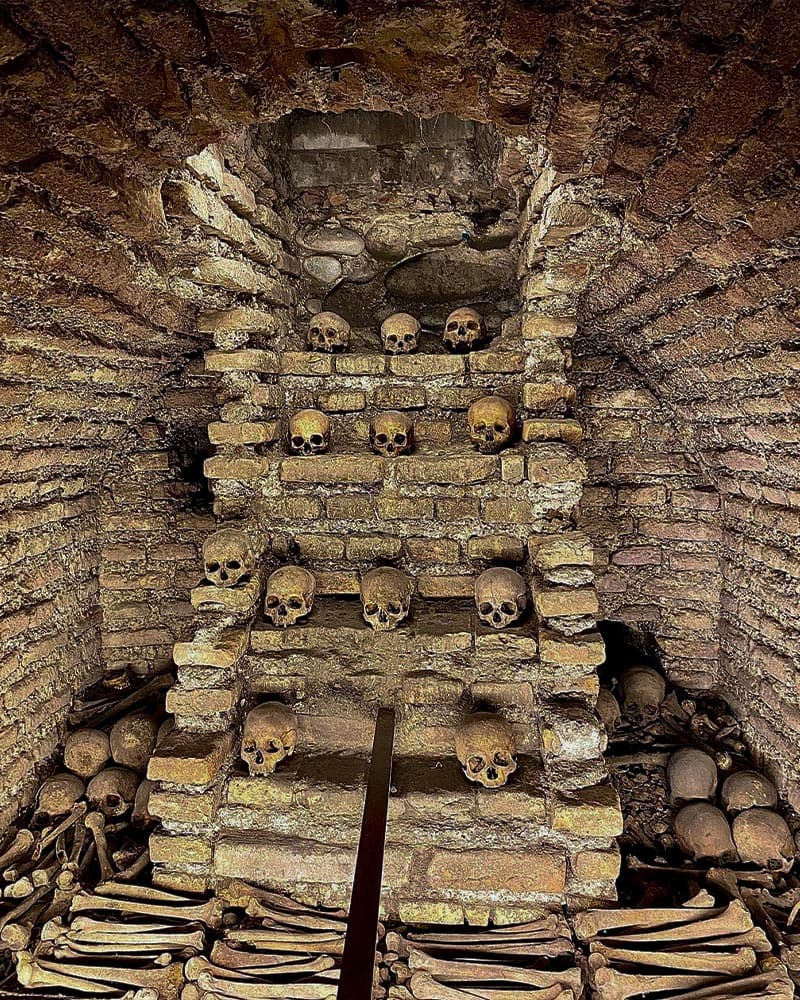
Port of Callao: History and Adventure on the Peruvian Coast
The Port of Callao is Peru’s main commercial port and a site full of history and adventure. Your visit to this coastal area is perfectly complemented with stops at Monumental Callao, an impressive community art project that includes artist studios, restaurants, and rooftop parties; the Palomino Islands, accessible by a half-day boat tour where you can see sea lions and seabirds; and the Real Felipe Fortress, built in the 18th century to defend the coast from pirate attacks. Callao offers a perfect blend of history, art, and nature.
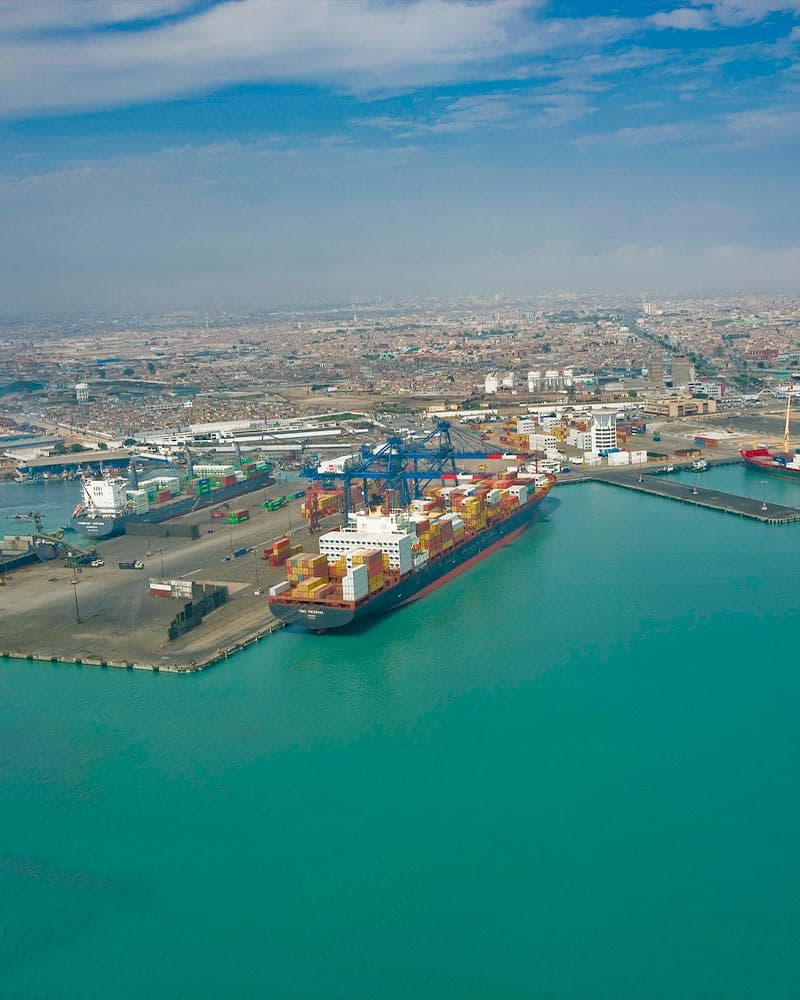
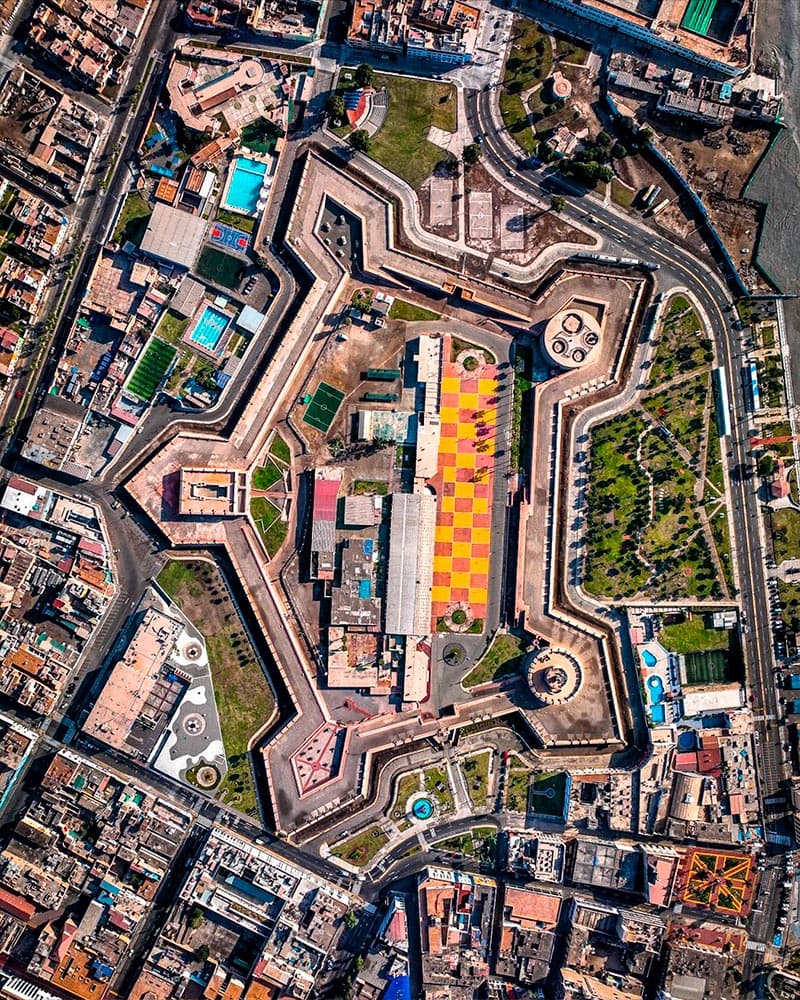
Lima’s Malecón: Scenic Walk Along the Coast
The Malecón is one of Lima’s most picturesque landscapes. This park-filled walkway stretches about 10 kilometers along the cliffs that separate the Pacific Ocean from the city and is the perfect place to enjoy a sunset, exercise, or try your hand at paragliding. Walking along the Malecón is one of the best ways to appreciate Lima’s natural beauty and vibrant urban life.

Larcomar: Shopping with Pacific Views
Located along the coastal Malecón, Larcomar is an exclusive open-air shopping center offering a shopping experience with spectacular views of the Pacific. With 16 restaurants and cafes and a variety of boutiques, Larcomar is a must-stop in Miraflores. Whether you’re looking for fashion, souvenirs, or a place to relax with an impressive view, Larcomar has something for everyone.
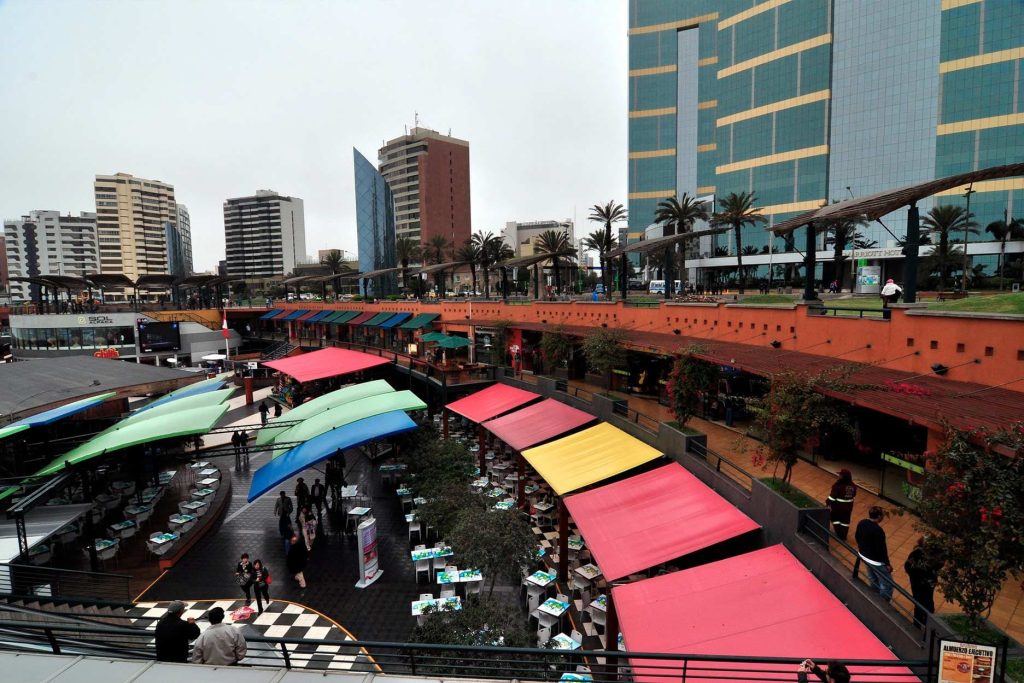
Artisan Markets: The Soul of Peruvian Handicrafts
The best souvenirs from Peru include hand-woven textiles, soft alpaca wool sweaters, artistic ceramics, colorful chullos (Andean hats), and woven scarves. Before ending your trip, you can stock up on these treasures at Lima’s artisan markets. But if Lima is your first stop, take some time to browse the shops and get an idea of what you’ll see later; you’ll be better prepared to identify a unique item during your travels through Peru.
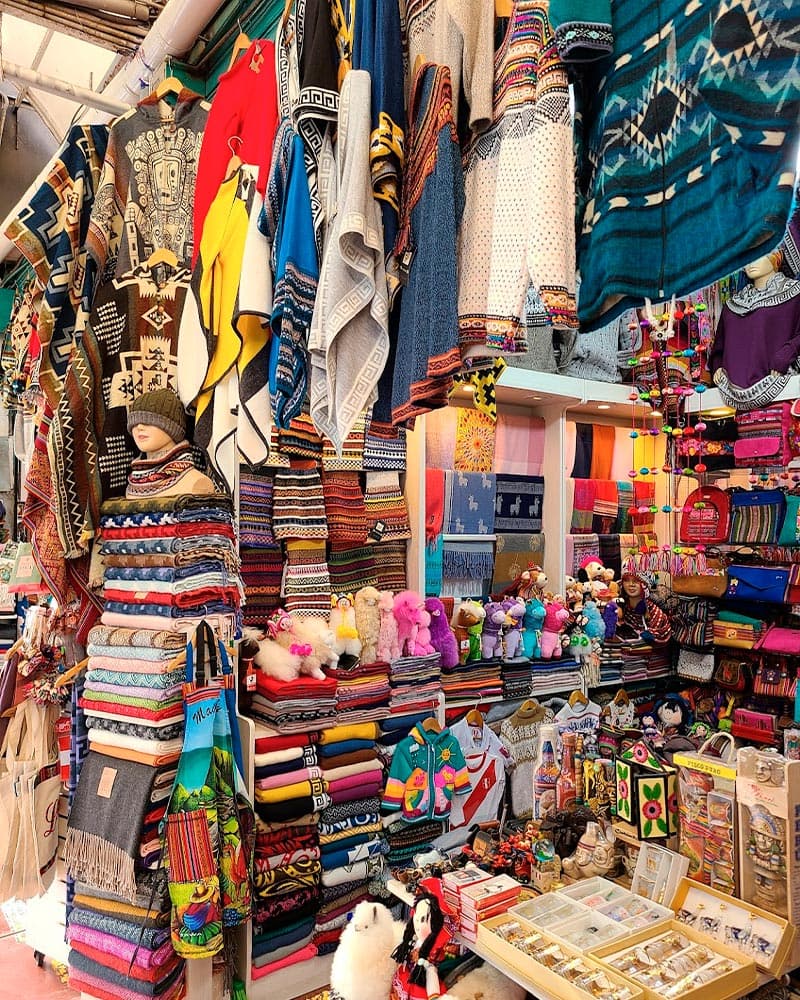
Archaeological Sites in Lima: A Link to the Past
Despite being Peru’s most modern and dynamic city, Lima is also home to some of the oldest archaeological remains in South America. This contrast is evident with a visit to the Huaca Pucllana, a 4th-century adobe temple surrounded by the skyscrapers of Miraflores. Other ancient temples are scattered throughout the districts of Pueblo Libre and San Miguel. Just 30 kilometers from Lima, the Pachacamac Temple has been an essential complex for millennia, offering a deep insight into the pre-Inca civilizations that inhabited the region.
Pachacamac: Lima’s Pre-Inca Oracle
Pachacamac, located in the district of Lurín, is the most essential and extensive archaeological site in Lima, covering 465.32 hectares and possessing immense historical value. This ancient site, under the jurisdiction of the Ministry of Culture, is a must-visit for those interested in the pre-Hispanic history of Peru. Pachacamac houses a museum that exhibits over 6,500 artifacts, including ceramics, textiles, and the renowned Pachacamac idol, a revered symbol of the deity worshiped at the site.
The name Pachacamac comes from the Quechua words “Pacha,” meaning “earth,” and “Camac,” meaning “creator.” This sacred site was a significant pilgrimage destination for people from all over the Andean world, especially from Cusco, who traveled here to consult the oracle and believed to have the power to predict the future and offer guidance on crucial matters. The site includes the Temple of Pachacamac, built in honor of the god Pachacamac, and became a vital spiritual center under the influence of various cultures.
Initially, the Lima Culture, which flourished between 100 A.D. and 650 A.D., established Pachacamac, building temples and oracles that attracted pilgrims from all over. Later, the Wari culture occupied the site between 600 A.D. and 1000 A.D., during which the temple gained widespread popularity. By 1470, the Incas had incorporated Pachacamac into their vast empire, recognizing its importance as a religious center. By 1533, as mentioned in the chronicles of the Spanish conquerors, Pachacamac was the most important religious site on the Peruvian coast.
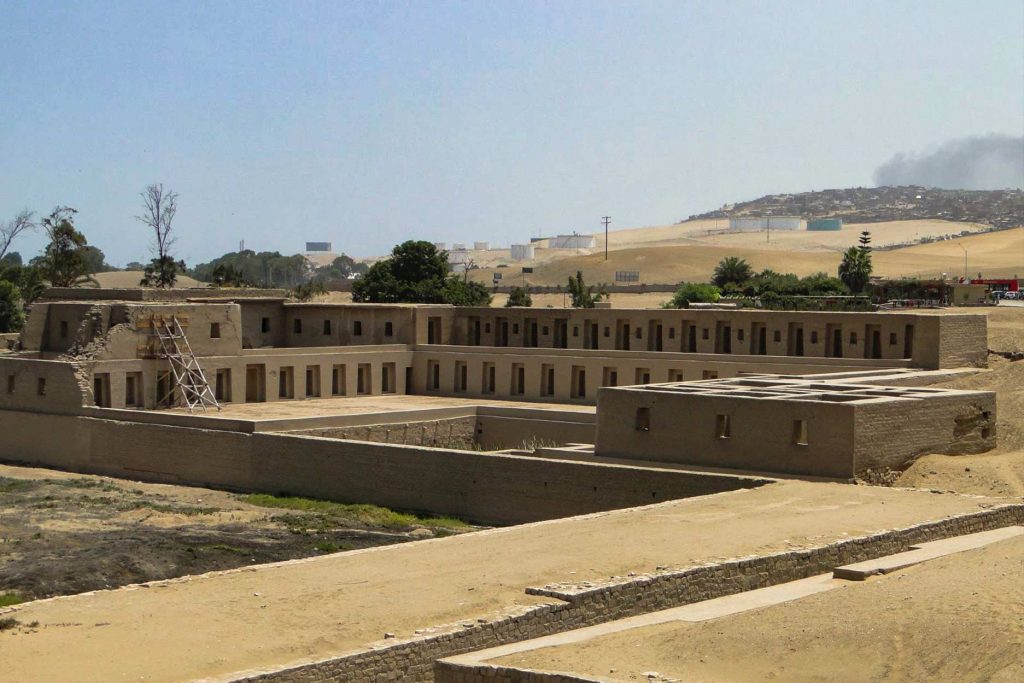
The Sacred City of Caral-Supe: Cradle of American Civilization
The Sacred City of Caral-Supe, located 182 kilometers north of Lima in the province of Barranca, is the oldest civilization in the Americas, dating back 5,000 years. Covering 626 hectares, this astonishing archaeological site stands on the fertile Supe River valley and offers a unique glimpse into Peru’s ancient past.
Caral-Supe, recognized as a UNESCO World Heritage Site in 2009, predates famous Peruvian sites like Machu Picchu and the Nazca Lines. It is considered the cradle of civilization in the Americas, providing invaluable insight into early life in Peru. Discovered in the early 20th century, extensive excavations have revealed the remains of grand temples, pyramids, public buildings, and residential areas.
Visitors to Caral-Supe can explore these ancient structures, marveling at the advanced architecture and social organization that characterized this early civilization. The site’s significance lies in its antiquity and its role as a center of culture, commerce, and religion in ancient Peru.
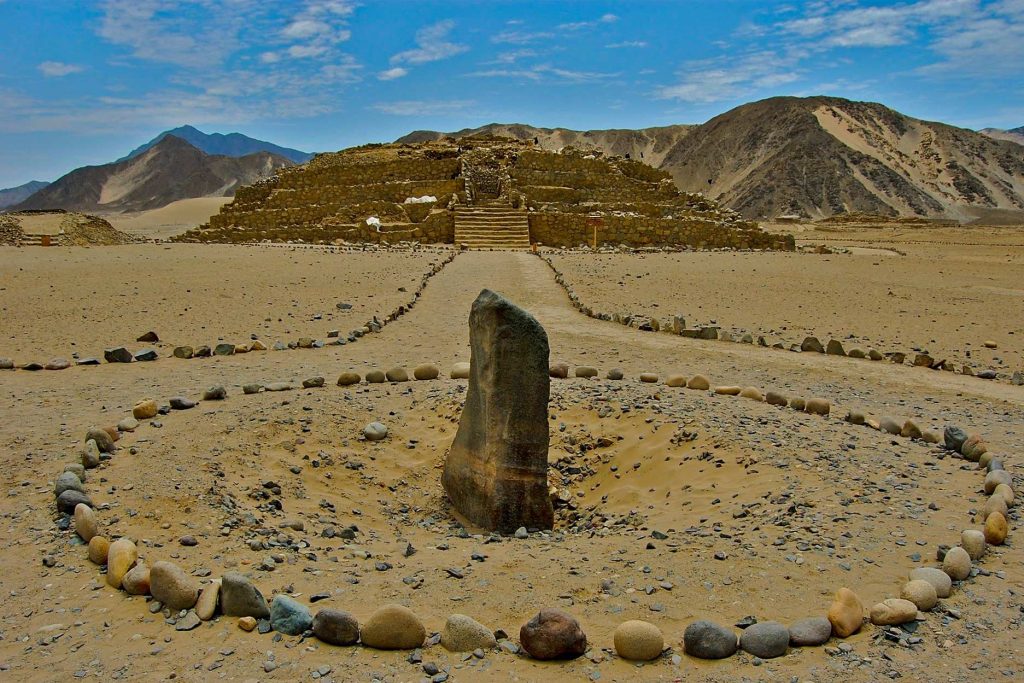
Hotels in Lima
Lima, the vibrant capital of Peru, offers a wide range of accommodation options to suit all tastes and budgets. Travelers often seek hotels in three main areas: near the airport, in coastal districts like Miraflores, Barranco, and San Isidro, or the historic city center. Below are some of the best hotel options in Lima for 2024, ideal for enjoying a comfortable stay and exploring everything the city offers.
Hotels in Miraflores
Hilton Lima Miraflores
This luxury hotel is in the heart of Miraflores, one of Lima’s most exclusive and touristy areas. With elegant rooms, a rooftop pool with ocean views, and a restaurant offering contemporary Peruvian cuisine, it’s an ideal choice for those seeking comfort and luxury.
Location: Calle Juan Fanning 515 – 525, Miraflores, Lima
Pullman Lima Miraflores
The Pullman Lima Miraflores combines modern design with an excellent location near the Malecón and the Larcomar shopping center. It’s perfect for those wanting to explore Miraflores’ nightlife, restaurants, and shops.
Location: Avenida 28 de Julio 398, Miraflores, Lima
Casa Andina Standard Benavides Hotel
This more affordable yet highly rated option offers comfort and quality services in a strategic location in Miraflores. It is ideal for those looking for accessible accommodation without sacrificing quality.
Location: Av. Alfredo Benavides 271, Miraflores, Lima
Hotels in Barranco
Hotel B
A luxurious boutique hotel located in a restored Republican-era mansion. Perfect for art and culture lovers, with nearby galleries and the bohemian ambiance characteristic of Barranco.
Location: Sáenz Peña 204, Barranco, Lima
Villa Barranco by Ananay Hotels
This charming boutique hotel offers a personalized experience in a historic setting. It’s ideal for those seeking an intimate and peaceful atmosphere close to the hustle and bustle of Barranco.
Location: Avenida Pedro de Osma 202, Barranco, Lima
Hotels in San Isidro
Swissôtel Lima
This luxury hotel in San Isidro is known for its excellent service and top-notch facilities, including a spa, multiple dining options, and a business center. Ideal for business and leisure travelers.
Location: Avenida Santo Toribio 173, San Isidro, Lima
Hyatt Centric San Isidro Lima
Located in Lima’s business center, this hotel is a modern option focusing on contemporary design and comfort. Perfect for those who want to be close to central offices and embassies.
Location: Av. Jorge Basadre 367, San Isidro, Lima
Hotels near Jorge Chávez Airport
Costa del Sol Wyndham Lima Airport
This hotel is the best option for travelers seeking convenience and proximity to the airport. It offers 24-hour service, a spa, and a gym and is ideal for short stays between flights.
Location: Jorge Chávez International Airport, Callao, Lima
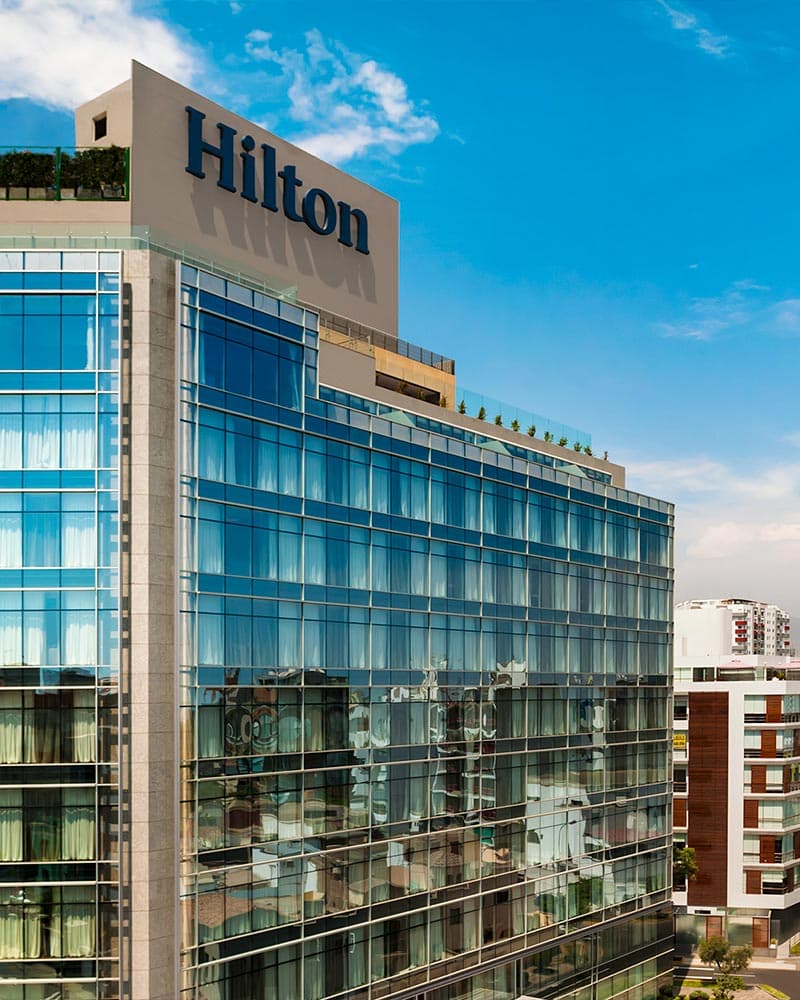
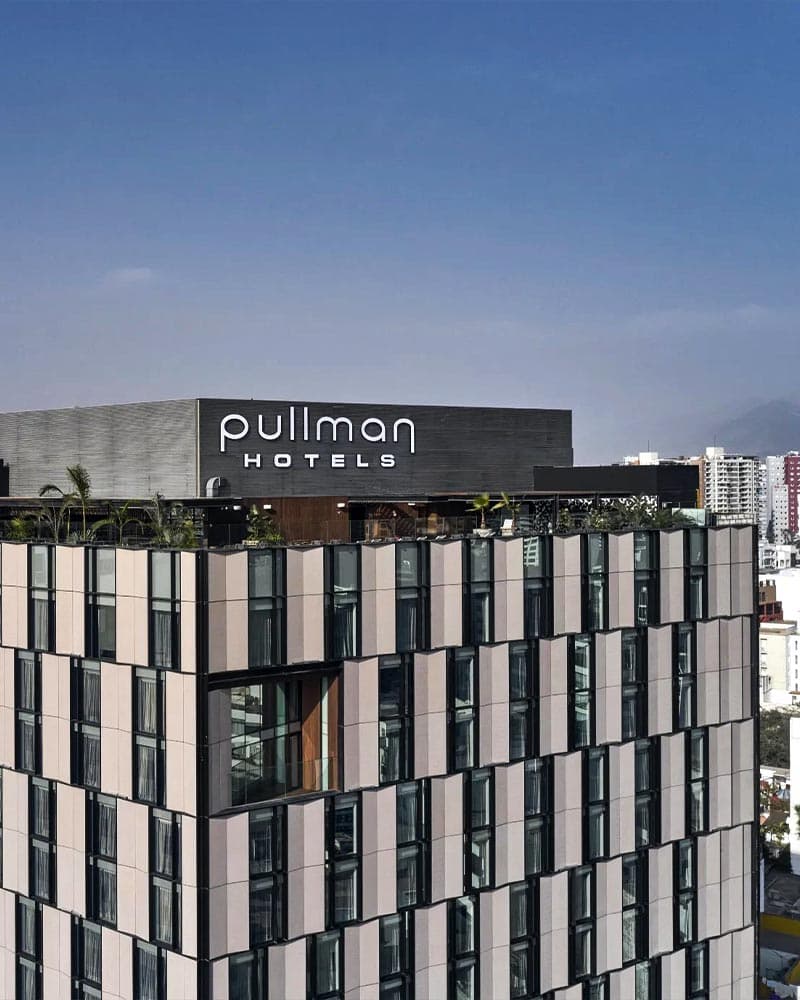
Restaurants
Lima is a top culinary destination, offering an impressive variety of dining options, from establishments led by award-winning chefs to restaurants serving the best dishes from all over Peru.
Lima’s dining scene offers endless and constantly evolving choices, whether looking for a luxury experience or a casual atmosphere.
Below, we present some highly recommended restaurants in Lima. We suggest reserving in advance, as these popular spots tend to fill quickly.
- Central: Recognized as the best restaurant in the world in 2023, Central offers a unique dining experience with menus that explore Peru’s diverse ecosystems. It’s the perfect place for those seeking an exceptional dinner in Barranco.
- Maido: This restaurant fuses the best of Japanese and Peruvian cuisine, ranking among the best in the world. Maido’s Nikkei experience takes you through innovative flavors in Miraflores.
- Isolina: A more casual option in Barranco, Isolina Taberna Peruana is perfect for enjoying traditional Peruvian food in a relaxed setting. Its generous and authentic dishes make it a favorite among locals and tourists.
- Kjolle: Led by renowned chef Pía León, Kjolle celebrates Peruvian ingredients with creative dishes that highlight the diversity of the local pantry. Located in Barranco, it’s a must-stop for haute cuisine lovers.
- Mayta: In Miraflores, Mayta offers a contemporary dining experience focusing on local ingredients. Its pisco bar is an additional attraction for those seeking quality cocktails.
- Mérito: This restaurant in Barranco fuses Venezuelan and Peruvian flavors, creating a culinary proposal that stands out for its creativity and use of fresh, local ingredients.
- Osso: Osso in La Molina is a paradise for meat lovers. With a selection of premium cuts and artisanal charcuterie, this place is a reference in Lima for enjoying the best meat.
Explore more on our blog: Discover the Flavors of Lima: Guide to the Best Restaurants.
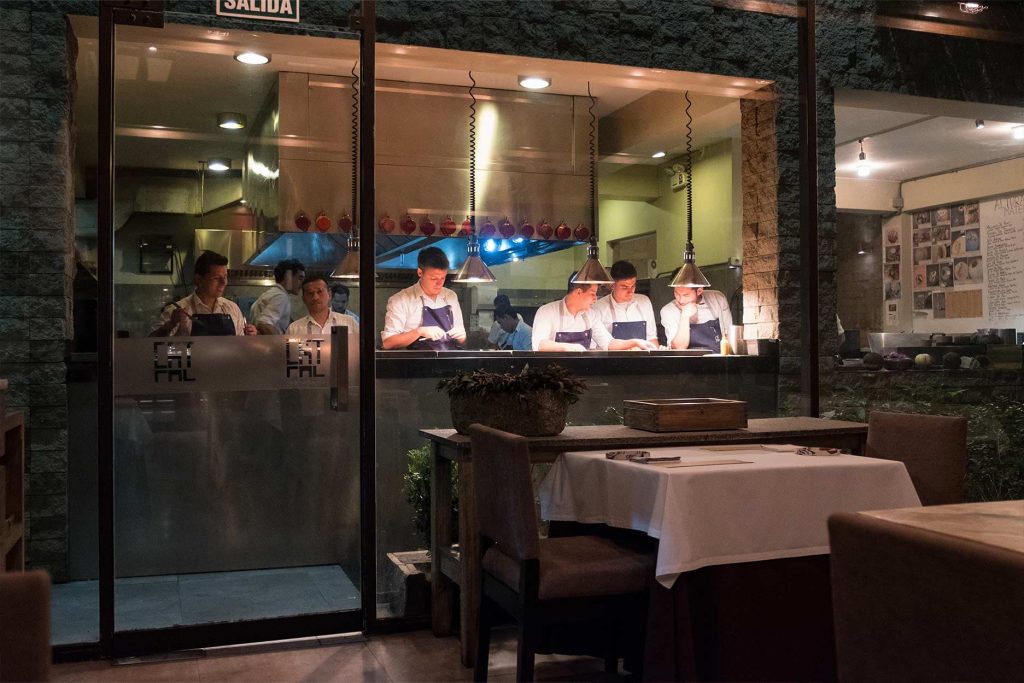
Things You Should Know Before Visiting Lima
Gray Skies
Although Lima enjoys pleasant temperatures year-round, the city is covered by a dense gray mist more than half the time. Despite being situated on the coast, you’ll unlikely find sunny days to enjoy the beach. Even during Lima’s summer, the sunniest season, it’s a coin toss if the sun will appear. If you visit the City of Kings, it’s best to moderate your expectations of seeing the sun.
Let’s Eat!
Lima has established itself as the culinary capital of Peru, a country that has recently gained recognition as the gastronomic capital of South America. This means that if you’re in Lima, you must go out and eat a lot! The culinary offerings are comprehensive and delicious, from fresh seafood, ceviches, and chifa to creole food. Don’t worry about the lack of sun; enjoy Lima’s restaurants. Additionally, Lima is home to some of the world’s best restaurants, like Central and Maido, which you can’t miss.
Traffic
Lima, how to put it kindly? It has some of the worst traffic in the world. No matter the time of day, there’s always traffic, and don’t expect to get anywhere quickly between 4 and 8 PM. Make sure to arrive early at your destination or consider traffic time when planning your day. There’s a Metropolitano service that can help you move faster through Lima, but it’s usually crowded.
Don’t Eat Ceviche at Night
Like a local Peruvian, avoid eating fish, especially ceviche, at night. Ceviche is a dish to be enjoyed during the day when it’s freshest. Peruvians don’t eat it at night; those options on the menu are aimed at tourists who need to learn the customs and end up eating lower-quality fish.
Unconventional Beaches
Although Lima is located along the Pacific Ocean, expect something other than conventional beaches. If your definition of a beach includes soft sand, you’ll be surprised to find that Lima’s beaches are mostly rocky. All beaches, except one in Barranco, are made of small stones. Even entering the water can be challenging, as the waves push loose stones against your feet as the tide comes in and out.
Expensive Taxis from the Airport
Many need to consider in their budget how expensive a taxi can be from the airport to Lima. Jorge Chávez International Airport is located in the city’s suburbs, to the north, in a dangerous district called Callao. While the area is unsafe, you don’t need to fear taxis; make sure the driver is licensed, which they will always show you so you know it’s legitimate. Due to the extended distance from the airport to areas like Miraflores or Barranco, taxis cost between 60 and 100 soles (18.5 to 30 dollars), sometimes even more.
Choose the Ideal Neighborhood for Your Stay in Lima
Lima has numerous neighborhoods, each with its unique personality and characteristics. Given the city’s extensive nature, it’s advisable to stay in an area close to the places you want to visit.
Research a bit to discover the best neighborhood in Lima for you. Some districts are ideal for families with children, while others attract travelers on a budget or those looking to enjoy the local nightlife. Most tourists stay in the modern district of Barranco or the central Miraflores, and it’s no surprise why. However, less-visited districts like Pueblo Libre or Magdalena del Mar can win you over with their top-notch museums and authentic atmosphere.
Learn Some Basic Spanish Words and Phrases to Make Your Trip Easier
Although a quick search on Facebook will connect you with numerous English-speaking expat groups who fell in love with Peru and settled in Lima, most locals need to speak fluent English.
Fortunately, transport apps eliminate the need to give detailed directions to taxi drivers, and market purchases can often be negotiated with creative gesturing.
However, to better integrate and reduce the chances of being scammed, learning a few Spanish phrases is an excellent way to show respect for the locals and feel less like an outsider in this Spanish-speaking city. Many Lima residents will greet you with a “¿qué tal?” or “buen día,” and doing it yourself will help you gain sympathy.
Knowing the numbers is also useful when it comes to paying a fair price, as it’s common for prices to be inflated for those who only speak English.
Follow Big City Safety Precautions to Avoid Theft in Lima
Lima is a relatively safe destination for tourists in terms of serious crime, but that doesn’t mean it’s wise to walk around the city after dark with a camera or a new phone in plain sight. Like in any big city, opportunistic crime, especially theft, is common in Lima.
To avoid losing valuables, stay alert and aware of your immediate surroundings. Don’t leave your bag, purse, or phone on the seat next to you while traveling in a taxi or public bus, and avoid walking with a visible wallet in your back pocket.
Phone snatching on the street is another issue. Be bold about asking for directions or using a paper map instead of carrying your phone as a digital map, especially in neighborhoods less frequented by tourists.
Safety Tips for Women Traveling Alone in Lima
However, it is essential to be cautious (as, unfortunately, we always must be) with transportation offers from unmarked taxi drivers or rounds of free drinks in bars and to avoid walking alone at night, especially in quiet areas of the city.
For added safety, find another traveler with similar interests at your hostel (or contact expatriates in Facebook groups) to accompany you on your outings.
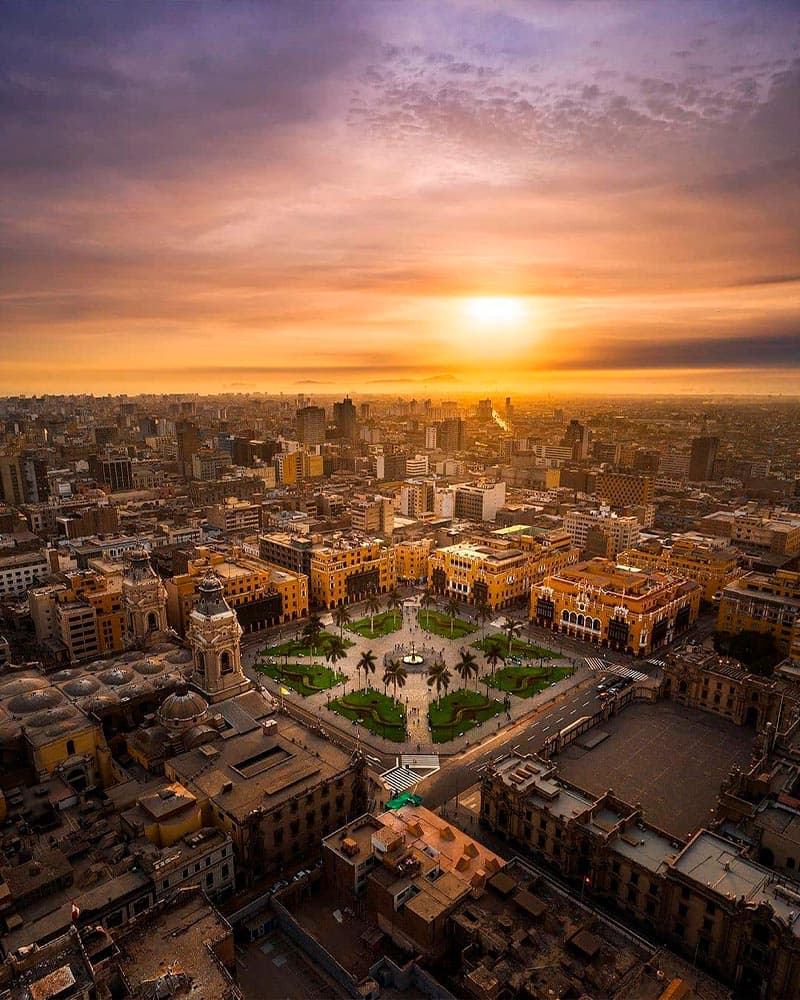
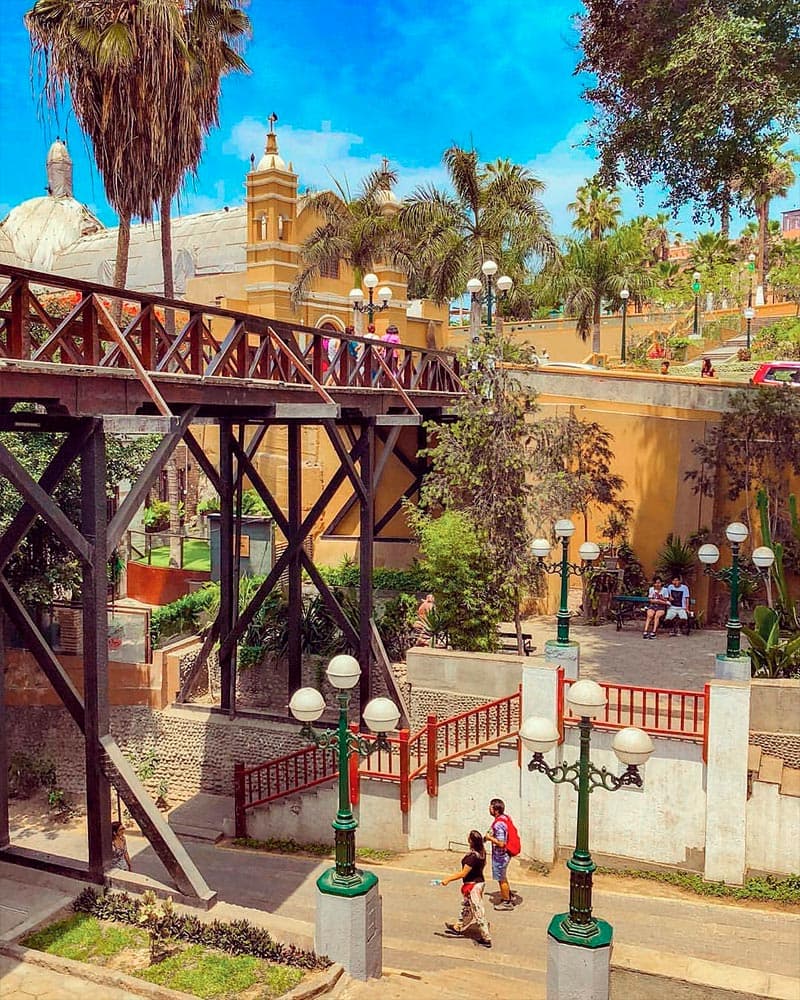
Lima Cultural Calendar
Anniversary of Lima
Date: January 18 (every year)
Description: On January 18, Lima celebrated its founding by Francisco Pizarro in 1535. The city comes alive with cultural and artistic festivals, with the highlight being the Grand Serenade of Lima at the Plaza de Armas in the historic center. It’s an ideal time to explore the city’s rich history and enjoy free events.
National Pisco Sour Day
Date: First Saturday of February
Description: The Pisco Sour, Peru’s national drink, is celebrated with parties, food fairs, and tastings at Lima’s restaurants and hotels. It’s the perfect day to enjoy this iconic cocktail that combines pisco, lime juice, simple syrup, and egg whites.
Holy Week
Date: The week leading up to Easter
Description: Holy Week in Lima is one of the most important religious celebrations of the year. During this week, processions, festivals, and feasts take place, and the city welcomes many local and international tourists, so it’s advisable to book in advance.
Ceviche Day
Date: June 28 (every year)
Description: This dish, an essential part of Peru’s cultural identity, has its day of celebration. Ceviche Day is a day of culinary festivals, preparation competitions, and special menus in restaurants that pay homage to this delicious dish.
Independence Day (Fiestas Patrias)
Date: July 28-29 (every year)
Description: Fiestas Patrias celebrates Peru’s independence from Spanish rule, proclaimed in 1821 by José de San Martín. These days, Lima is filled with festivals, parades, and performances in plazas and parks, making it one of the biggest festivities in the country.
Saint Rose of Lima Day
Date: August 23 (every year)
Description: Saint Rose is the patron saint of Lima and Latin America. Her day is celebrated with processions and visits to the Church and Convent of Santo Domingo, where her remains are located, and to the Church and Sanctuary of Saint Rose of Lima.
Mistura Food Festival
Date: Early September
Description: This food festival, one of the largest in Latin America, takes place in various locations around Lima. It brings together over 300 farmers and vendors from all over the country, offering an excellent opportunity to discover why Lima is considered one of the world’s culinary capitals.
Procession of the Lord of Miracles
Date: October 18 (every year)
Description: This is one of the largest religious processions in the world, with more than 300 years of history. Thousands of devotees, dressed in purple, follow a large image of Christ, parading through the streets of Lima in a procession that lasts several days.
Creole Song Day
Date: October 31 (every year)
Description: This day celebrates Creole music, a unique genre that blends traditional Peruvian, European, and African instruments. Celebrations include music, dancing, and beer parties throughout Lima, offering an alternative to Halloween.
These events make Lima a vibrant and culturally rich destination year-round. Planning your visit around these celebrations can offer a unique and authentic life experience in Lima.
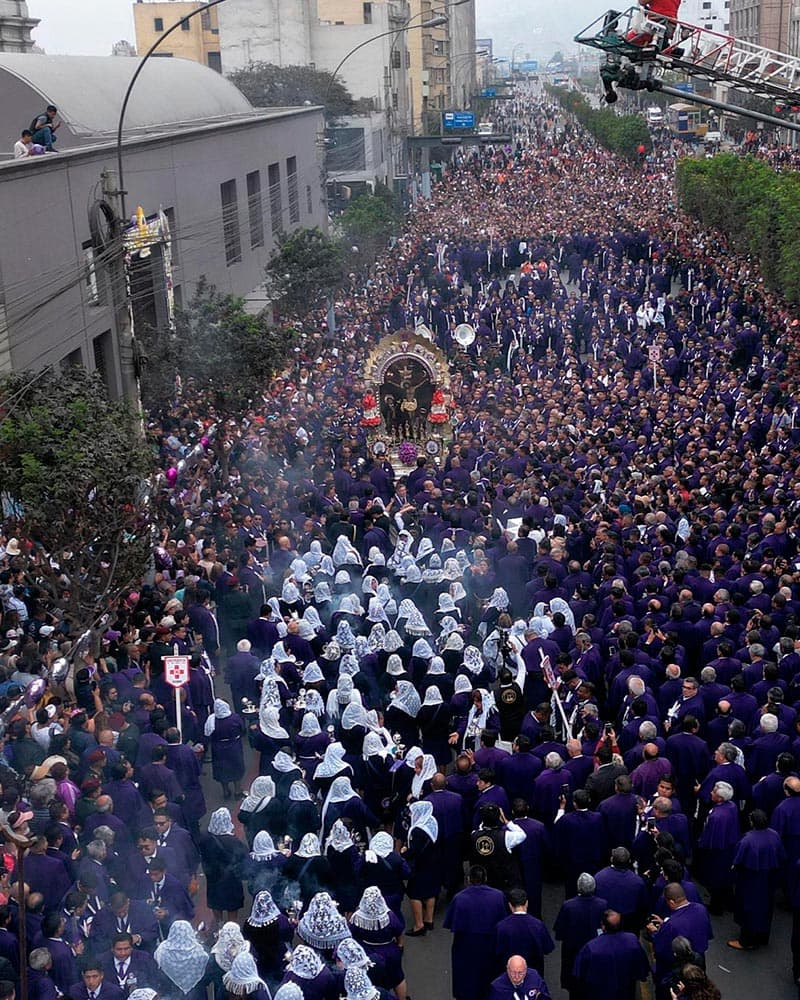
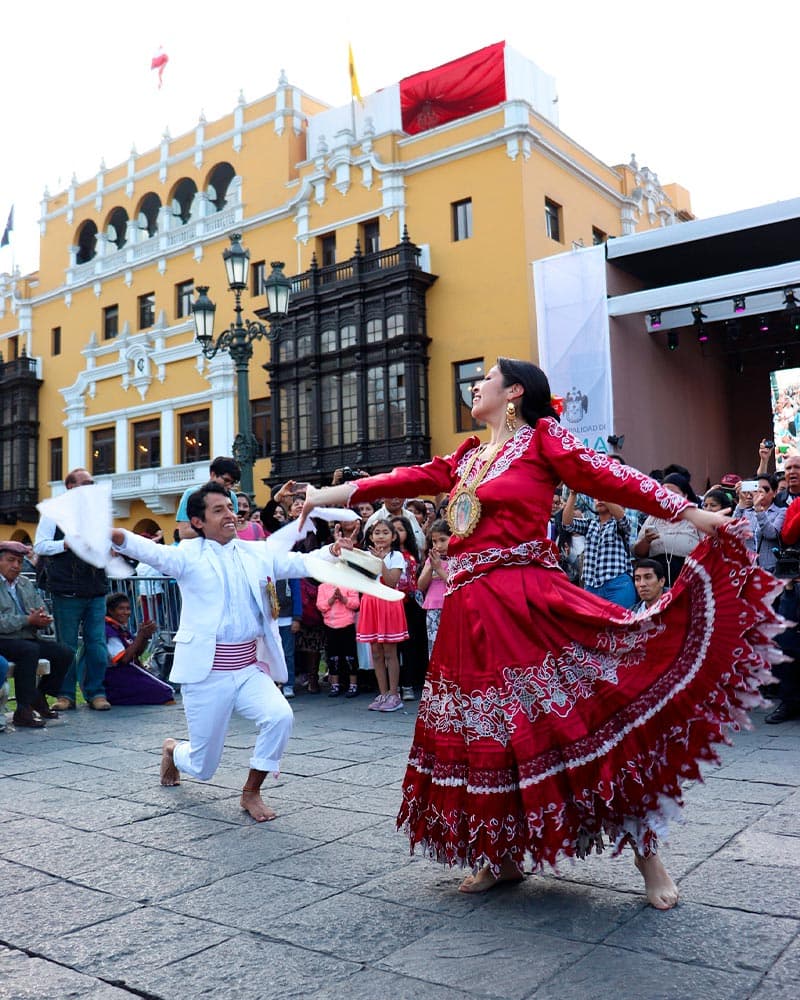
Frequently Asked Questions
Where is Lima located?
Lima, the capital of Peru, is located on the central Pacific coast, surrounded by coastal deserts and stretches along the valleys of the Chillón, Rímac, and Lurín rivers. It covers an area of 2,672 km².
What is the average altitude of Lima?
Lima is a city at sea level; the average altitude of the historic center is 161 meters above sea level.
- What is Lima’s population?
In 2021, the population of Metropolitan Lima and its districts was estimated at 9,751,717 inhabitants, representing nearly 30% of Peru’s total population. The population density is approximately 3,000 people per square kilometer.
What is the predominant religion in Lima?
Christianity is the dominant religion in Lima. However, due to the historical influence of the Inca religion following the Spanish conquest, Peru is known for its religious syncretism. In recent years, Judaism, Buddhism, Hinduism, and Islam have also gained a presence, thanks to immigration.
What is Lima’s climate like?
Although Lima is located in the tropics and a desert, its climate is mild due to its proximity to the Pacific Ocean. During summer, from December to April, temperatures range from 18°C to 29°C. In winter, from June to October, temperatures vary between 14°C and 19°C, with gray skies, morning drizzles, and high humidity. May and November are transitional months, with sudden weather changes.
What is Lima’s main currency?
The main currency in Peru is the Sol. Most local markets and shops use the Sol, although transactions can also be made in US dollars (USD) at banks. Real estate transactions are generally conducted in USD.
What is Lima’s population composition?
Lima’s population is diverse, composed of mestizos, Europeans (descendants of Spaniards, Germans, Italians, and French), Afro-Peruvians, and Asians (mainly from China and Japan). This ethnic mix has made Peru one of the world’s top culinary destinations, with influences from Chinese and Italian cuisine creating unique Peruvian dishes.
How to get to Lima?
- By Land: The Pan-American Highway runs through the country from south to north, connecting with all the coastal cities and countries like Chile and Ecuador. Some roads connect Lima with the cities in the Andes and the Peruvian jungle.
- By Air: From Jorge Chávez International Airport, located in the province of Callao, 30 minutes from downtown Lima, you can take flights to any city in Peru or other countries.
- The best way to travel from Lima to Cusco: The fastest way to travel from Lima to Cusco is by flying from Jorge Chávez Airport to Alejandro Velasco Astete Airport in Cusco. The flight takes about an hour. Travelers who prefer to explore more of the country can take a bus from Lima to Cusco, passing through Abancay in a 20-hour journey or via Arequipa and Juliaca in a 24-hour journey.
What is the official language of Lima, Peru?
The official languages in Peru are Spanish, Quechua, and Aymara. Spanish is the most spoken, with approximately 80% of the population using it as their first language. Quechua, an indigenous language passed down through generations, is spoken by around 13% of the population, and Aymara is spoken by approximately 3%. Other indigenous languages, such as Shipibo-Conibo, Asháninka, and Awajún, are also spoken.
How to stay connected in Lima?
Most hotels, restaurants, and cafés in Lima offer free Wi-Fi. Additionally, purchasing a local SIM card to have mobile data during your stay is possible.
You might be interested in:
- Packing list for Peru
- How to get to Cusco?
- The 7 Best Treks to Machu Picchu
- Best time to visit Cusco, Peru
- Solo traveler in Peru: Guide for adventurers
- Discover the Flavors of Lima: Guide to the Best Restaurants in 2024
- Best Things to See and Do in Lima, Peru
- Peru Destinations: The Best Places to Visit in Peru

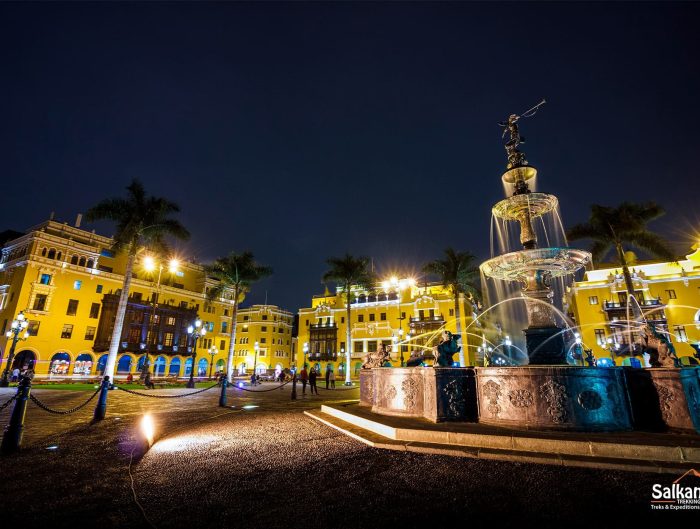


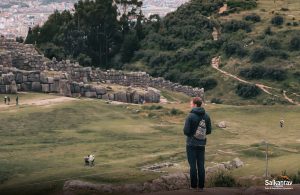
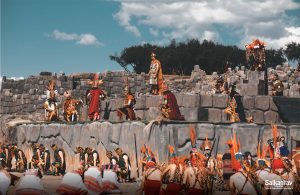
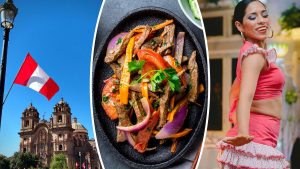





Leave A Reply